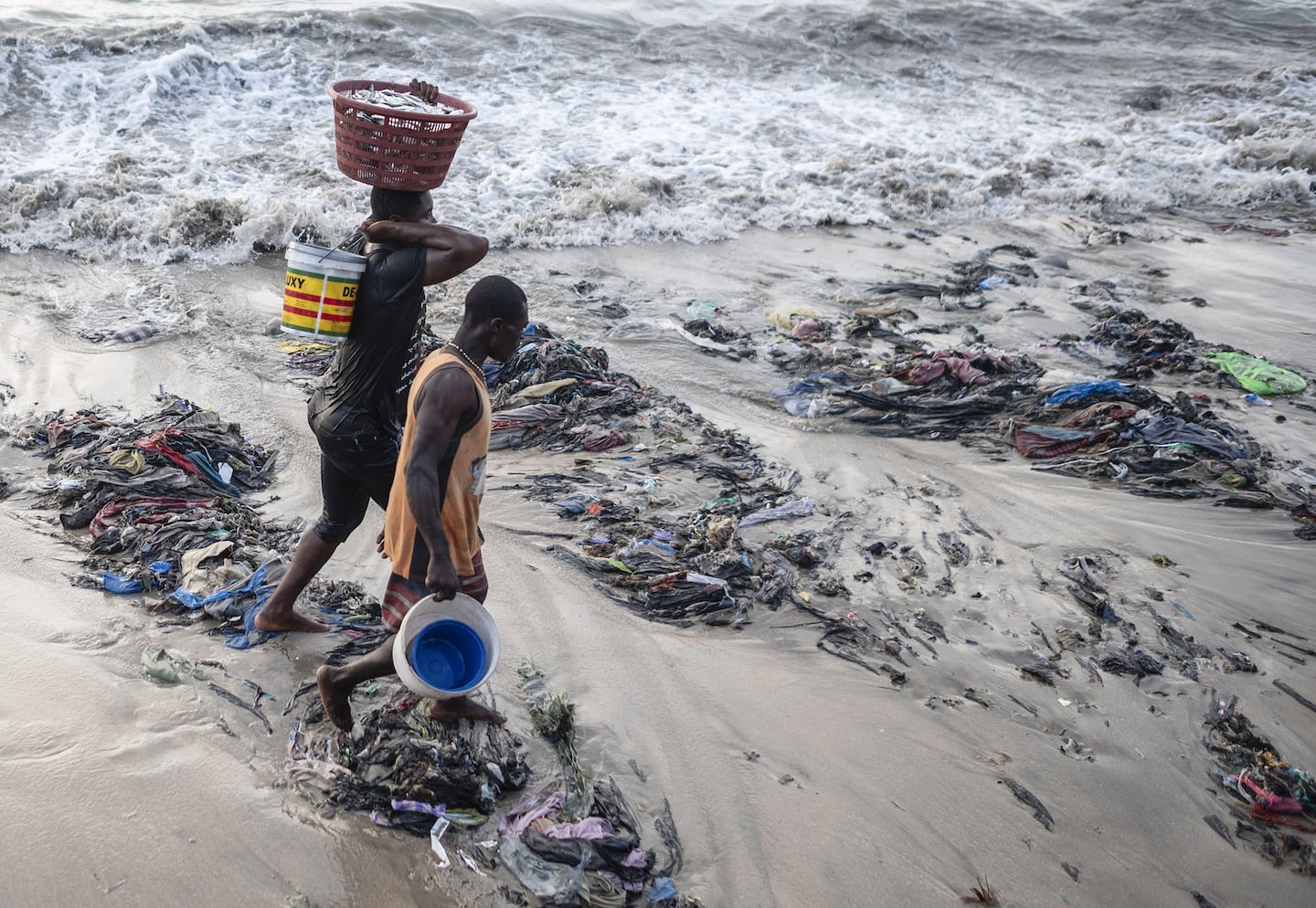Copyright The Boston Globe

Nana Wanjau is chief gender officer of the Pan African Chamber of Commerce, former vice president of the Commonwealth Business Women Africa Network, and founder of Power Woman International, a nonprofit supporting widows and women entrepreneurs in Kenya. She received the Global Women in Leadership Award in 2022. On the outskirts of Nairobi, mountains of discarded clothes — mitumba in Swahili — tower above the rooftops, the soil beneath them black with dye and microplastics. Every month, nearly 500 shipping containers of “donated” clothing arrive into Mombasa, Kenya, half of it worthless. What can’t be sold is burned or buried, clogging waterways and choking the air. The smoke that drifts over people’s homes carries the unmistakable stench of the West’s exported guilt. A new global report has exposed what I and many others who live in Kenya have witnessed firsthand: fashion’s dirtiest secret. Only 4 percent of apparel brands surveyed have extensive systems in place to recycle or reuse their products. The rest offer little more than token pilot projects or glossy sustainability campaigns that are all spin and no substance. Meanwhile, every second, the equivalent of a garbage truck full of textiles is landfilled or burned somewhere in the world. Advertisement For years, Western consumers have been told that donating unwanted clothes is an act of generosity. But much of what can’t be sold in the United States or Europe ends up in Africa. And Africa is overwhelmed. As fast fashion churns out ever cheaper, lower-quality garments, traders in Kenya and beyond who buy bales of secondhand clothes unseen are finding that a growing share is useless. Families who once made a decent living from resale now struggle to cover their costs, forced to discard heaps of unsellable waste. Of these mountains of waste, much is synthetic and non-biodegradable. Microplastic fibers and hazardous chemicals leach into soil and waterways or are released into the air by burning, eventually ending up in the intestines, blood, and lungs of local people and animals. I’ve seen it up close: mothers washing their children’s clothes in streams tinted with dye, fishermen pulling lifeless fish from once-clear lakes, and streets transformed into rivers when discarded fabric blocks the drains. Advertisement But the polyester-filled tide is beginning to turn, as regulators from Brussels to California tighten the rules on waste. Just this year, California and New York forbade the sale of textile articles containing PFAS (per- and polyfluoroalkyl substances) — “forever chemicals” that accumulate in the human body and the environment — thus tightening the supply chain before a single stitch is sewn. California has also passed the Responsible Textile Recovery Act, the first law to make clothing producers responsible for creating plans to collect, repair, and recycle the products they sell — a model that other states are now considering. Textiles and apparel are a priority for future updates of the European Union’s Ecodesign for Sustainable Products Regulation, which sets the legal framework for mandatory durability, recyclability, and traceability standards. In 2026-27, it will likely require brands to design longer-lasting, more recyclable garments and disclose their environmental impact. Such steps are the beginning of a global reckoning. But governments must do more to demand that manufacturers clean up their act. Some leading brands have realized they can’t keep spinning sustainability stories and are now building it into their business models. Levi’s and Reformation now have consumer reward programs that give credit for secondhand trade-ins and are increasing the proportion of their clothing made from recycled fabrics. Nike is now manufacturing two models of footwear without glue, allowing the parts to be easily disassembled and dropped off at recycling points in-store. With the right investment, the Global South could become much more than just a dumping ground. Eco-minded entrepreneurs are conducting research and building businesses that upcycle discarded fabrics into new products, making apparel manufacturers a central part of the solution. With apparel hubs across multiple countries, Youngone Corp. is embracing textile-to-textile recycling and creating new insulation materials for high-performance outdoor wear. Its Ecoloft Zero fabric uses 100 percent recycled, dye-free polyester made from factory scrap, conserving water and cutting chemical use — just one way in which circular innovation can transform waste into resource. Advertisement The fashion industry must take more responsibility for the damage it has done. If it won’t modernize, regulators and the next generation of consumers may force it to. This crisis won’t stay buried in African landfills forever.



